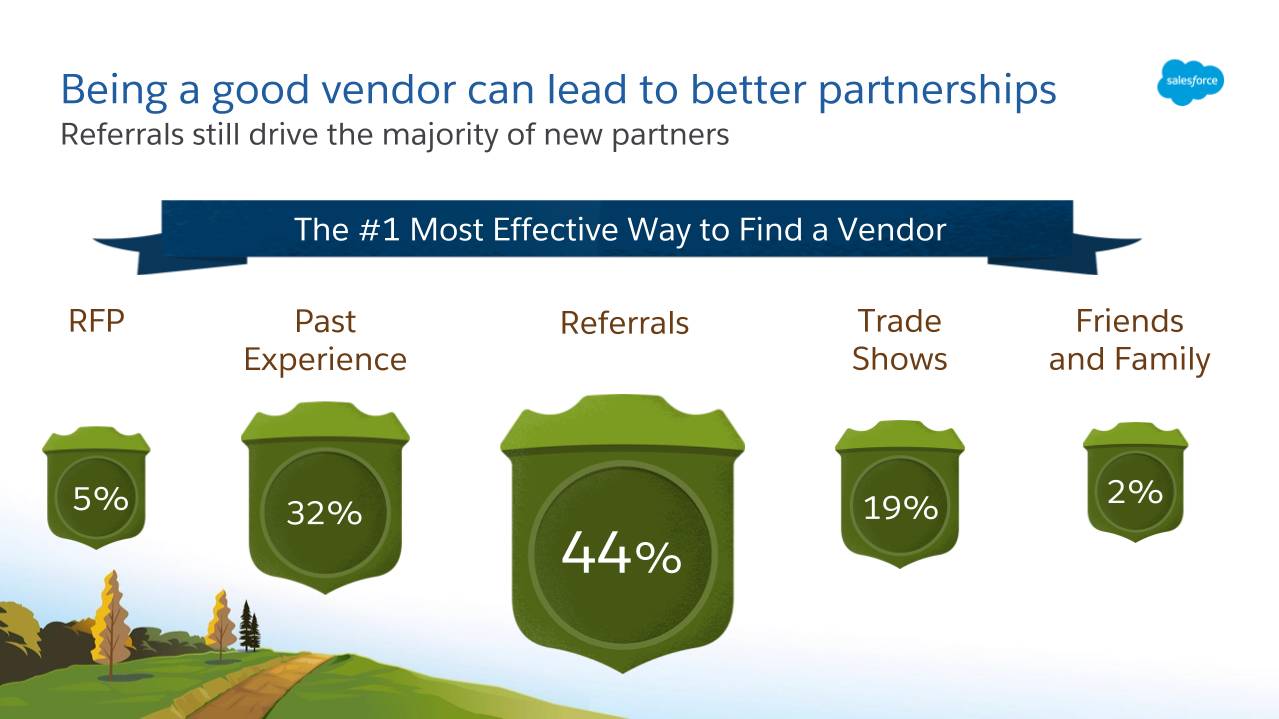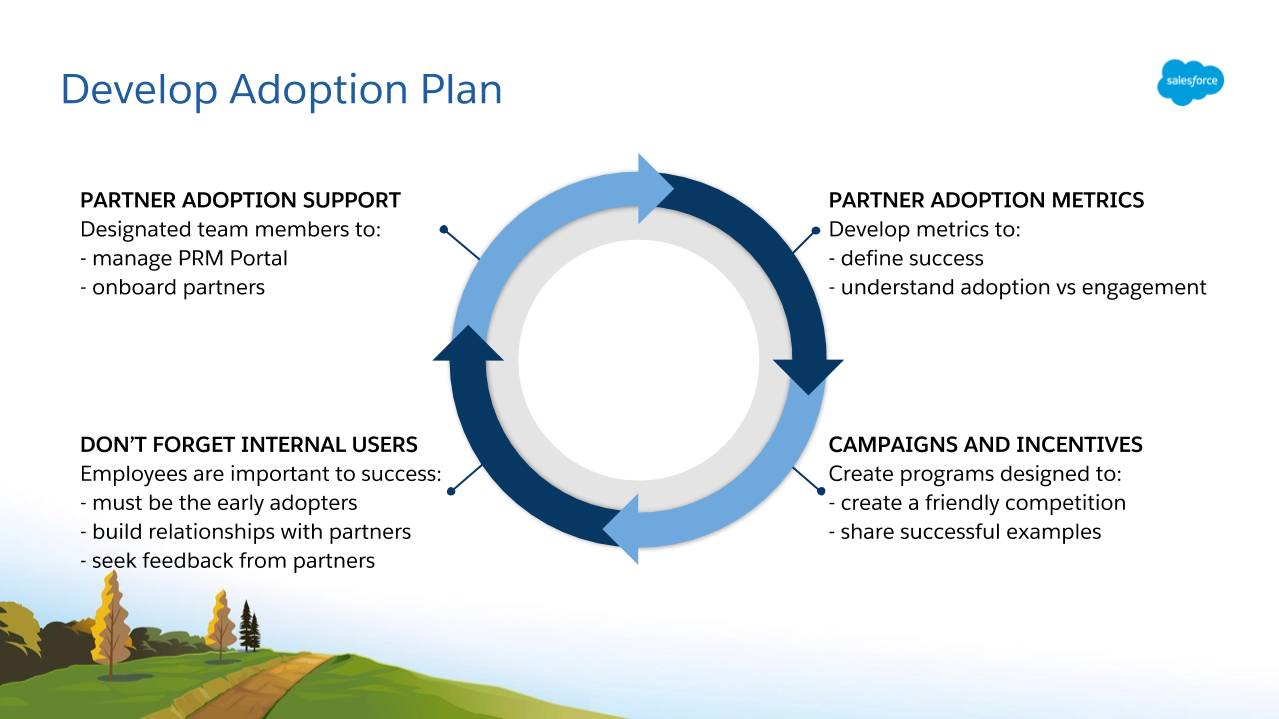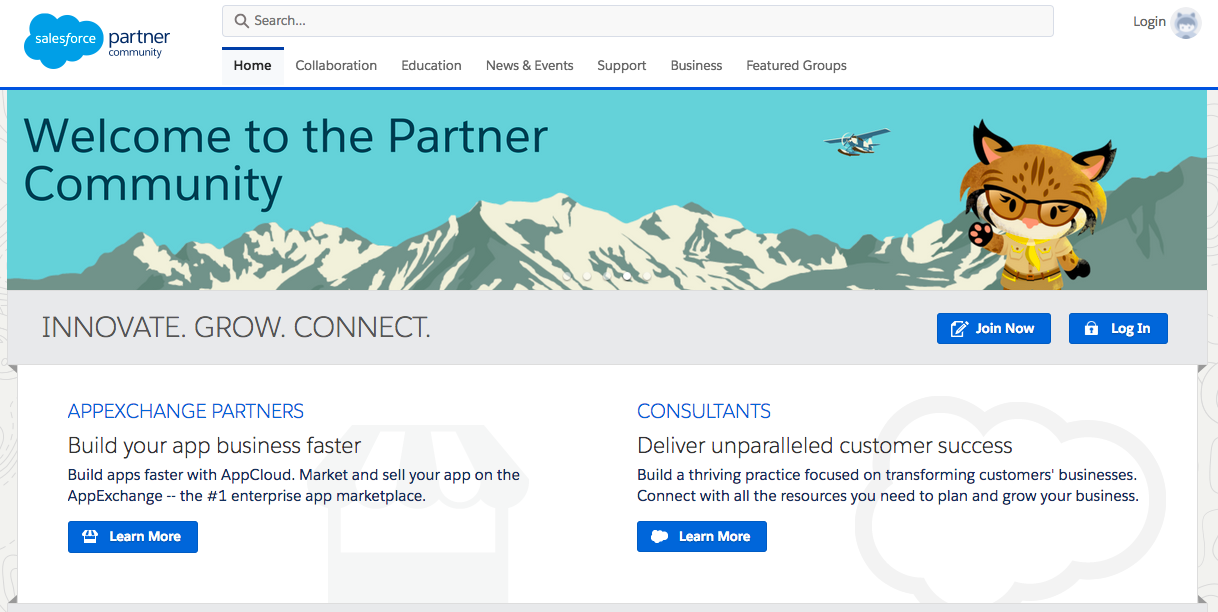Recruit and Onboard Your Channel Partners
Learning Objectives
After completing this unit, you’ll be able to:
- Understand how to successfully recruit partners.
- Understand the ways to share different types of content in your PRM portal.
- Understand the role of incentive programs to drive adoption.
- Recognize the value of promoting and marketing your portal.
Identify and Recruit Partners
It can be tempting to sit back and wait for partners to come knocking on your door, but your business won’t thrive by working with just anyone. Identifying and recruiting quality partnerships requires a well-organized strategy.
Start by stating the goal of your partnerships and develop a profile aimed at achieving it. Three potential partner types are:
Partners for Sales Reach: Can expand your presence in a particular market or help you break into a new industry.
Partners for Delivery and Implementation: Working with implementation and consulting partners is a proven strategy to augment technical staffing limitations.
Partners for Solutions, Support, and Maintenance: What if your product doesn’t provide everything your customers are looking for? Partners can be a great way to modify or extend functionality. Just check out Salesforce’s AppExchange! It’s a community of Salesforce’s awesome partners creating solutions and services on top of the platform.
Need support for your products? Partners to the rescue! Lean on them for support and ongoing maintenance of your product or service.
Now that you’ve identified what your partner should look like, time to do some good old-fashioned courting. We can just call it recruiting. Referrals account for the majority of new partners, but there are numerous other effective recruitment practices. And don’t forget that it’s important for partners to understand the value of working with you, so be sure to always articulate the benefit to them.

Onboard and Educate
Now that you’ve recruited your partners, the onboarding fun begins. This is your chance to make a good first impression and show partners what it will be like to do business with you. Remember, the first impression is everything and you only get one shot at it, so don’t take it lightly.
Just like you have many partners, your partners work with multiple vendors and expect to be onboarded quickly. Let’s break it down with some statistics.
- 12: Average number of vendors a partner works with
- 3: Number of vendors that drive 80% of a partner’s revenue
- 66: Percent of partners who expect to be onboarded in 60 days or less
To get you started, here are some options to help partners get the most out of onboarding.
Goal/vision: Be clear about the goal/vision of your partner program (remember shared purpose?).
Training: Focus on hands-on training as much as traditional instruction.
Self-service: Provide ample self-service options. Wouldn’t a partner portal be a great place to start?
Certify: Help partners differentiate themselves and reinforce knowledge and skills with certifications.
Develop Your Content Strategy
Want to keep your partners content? Give them the right content! Your partner channel will be happier, more efficient, and have an overall better experience if they can find what they need quickly. Simple to say, not so simple to do—but that’s where a content strategy comes in.
Whether we’re talking product specs, set-up instructions, or educational materials, your content strategy is crucial to enabling partners to sell more quickly and provide better service.
Think about the various places you can get content. Company-generated content is great for certain materials, but don’t forget to lean on industry experts, employees, and partners when it makes sense.
Let’s dive in a little deeper and focus on where your partner portal content strategy can start.
- Personalize the partner experience with relevant content and recommendations.
- Set up content libraries to organize your content.
- Provide knowledge articles, tools, and help at the appropriate time and related to where your partner is in their onboarding, sales, or service process.
Once you cover the basics, take eLearning to the next level by integrating your portal with an online learning management system (LMS) to help your partners access training and educational courses. Salesforce has some great partners that provide LMS platforms. We partner with partners to help partners learn—how’s that for coming full circle?
Develop Your Adoption Plan
Getting through onboarding is huge. But now we’re off to the races with your partners entering the market on your behalf. This is the part we’ve been waiting for—where the revenue starts to flow in for both your partners and your company. This is also the part where your partnership is more important than ever.
An adoption plan involves taking your onboarding strategy, content strategy, and business model and setting your partners up for success by making it easy to do business with you. Take a look at a sample plan and notice that this is a team effort that involves your partners, marketing teams, and employees.
Every adoption plan should take into account having dedicated team members to onboard partners, a set of metrics to monitor success, campaigns and incentives to drive outcomes, and involvement from internal employees to answer any questions from partners.

You may want to motivate partners with rewards and tier-based incentive programs. Here are some stats from our friends at the Harvard Business Review: MNCs whose channel managers use a tier-based incentive program are 36% more likely to be in the top quartile when it comes to top-line growth and tend to have operating margins that are 11% higher on average than those that do not.
Don’t know where to start? Let’s look at some ideas for incentive programs.
- Create channel performance levels for partners to attain.
- Be transparent about the advantages and benefits of each level.
- Motivate with deal protection, incentives, better margins, and support.
- Create prepackaged campaigns to encourage more deals.
- Keep partners motivated with charts and dashboards to monitor their progress and tap into their competitiveness.
Roll Out Your Promotion Plan
It feels pretty great to hone in on a recruitment and onboarding strategy, doesn’t it? But wait a minute. A strategy is great and all, but how will your partners ever know about it?
First let’s put on our marketing caps, and then let’s get to work on a promotion plan. If you have a marketing department, you may be able to get fancy and elaborate. Otherwise, keep it simple and keep the goal in mind: awareness for your partners.
We do it all the time here at Salesforce and one of the tools we use is our own partner portal.

It’s a good idea to make some content public (and add that into your content strategy) to entice new partners, who can offer various opportunities. Remember to use whatever channels or tools you employ today (social media/digital/events) to promote your portal. And don’t forget your employees, who may be a great source of referrals and can also help spread the word.
Whatever your promotion plan may entail, make sure it fits well into the budget and existing promotion channels in your company. And if you want to be bold, a 30-second Super Bowl ad works wonders! Better yet, we always recommend you create 3–5–minute overview video of your portal for sharing with existing and prospective partners (this is a must have). Happy promoting!
Let's move on to the last unit, where we'll cover the basics of managing and growing your channel.